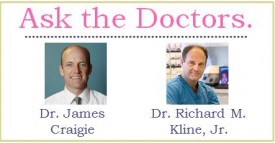Robert Frost once wrote, “You can’t get too much winter in the winter.” While its shorter days, colder temps and beautiful snow falls put a smile on the faces of some, others would disagree with the famed poet about winter. To them, the season makes them eat more, sleep more and generally feel down in the dumps. They can’t wait for it to be over and for spring to arrive.
If that sounds like you, you might be suffering from more than just cabin fever. Known by its more medical term, Seasonal Affective Disorder (SAD), it is categorized by the National Institutes of Mental Health as a medical condition that really does just last through the winter.
SAD is thought to be caused by the lack of sunlight from shorter days that lowers the serotonin or “feel good” hormones in your body and raises your melatonin levels, which causes you to feel more tired. According to Yale University’s Winter Depression Research Clinic, other symptoms of SAD include carb cravings, difficulty waking up in the morning, reduced work productivity, and withdrawal from social contacts. Those who live in northern and colder climates or who have a family history of depression may also be at a greater risk of suffering from SAD.
The good news is that there are treatments available to help turn the blues around, including daily physical activity, which raises your endorphins and counteracts the signs of depression. So if you can bundle up and get outside, do it, even if it’s just for 15 minutes a day.
Or you can bring the light inside. Sitting in front of a light box with 10,000 lux for 30 to 45 minutes in the morning mimics outside light and can reduce your SAD symptoms. You can also obtain a light box through your medical insurance plan or online, starting at $35. Unfortunately, light boxes might not work for everyone and counseling and anti-depression medications such as sertraline or bupropion might be necessary.
If your idea of dealing with winter blues is pulling the covers over your head and hiding from the world until the snow melts and spring thaws, think again. This is the best time to be more social and make plans with your friends and family, even if it’s just going for a walk together, going shopping or sharing a dinner and a movie.
Most importantly, having a positive outlook can help to reduce your symptoms. You can do this by keeping a gratitude journal or creating a vision board that provides a visual of your dreams and goals for the year. Having something to look forward to can help you to get through the winter blues.
The even better news about seasonal affective disorder is that once spring does start, your symptoms will typically start to wane and SAD patients begin to feel better.
The Center for Natural Breast Reconstruction believes in good health for everyone, regardless of the season. If you or someone you know is in need of breast reconstruction, contact them at NaturalBreastReconstruction.com or toll-free at 866-374-2627.





